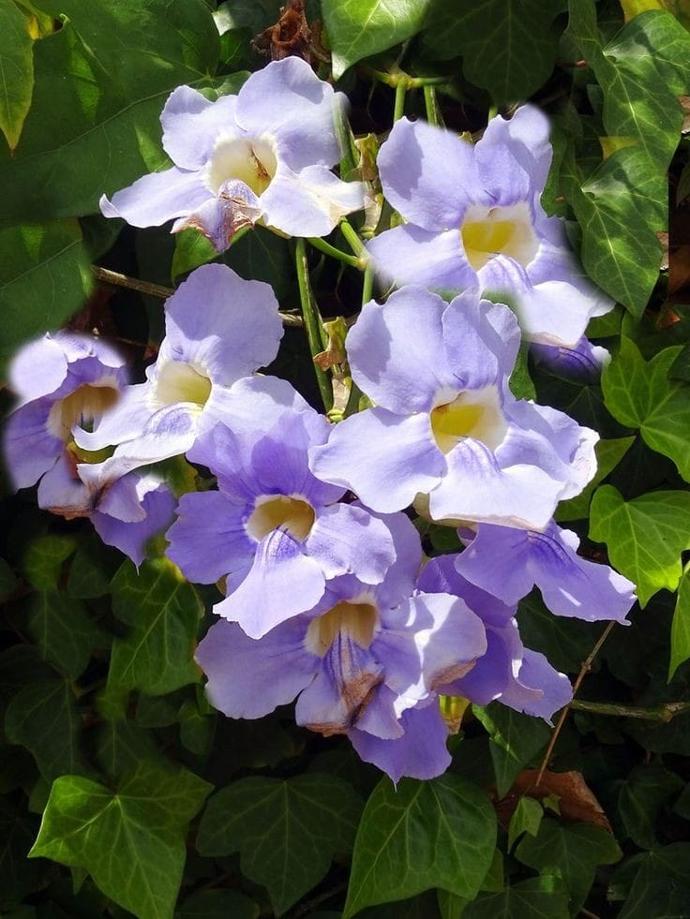Blue Trumpet Vine
Blue Trumpet Vine, possibly referring to a specific plant variety, may have varying care requirements. Generally, provide well-draining soil, appropriate sunlight, and regular watering. Pruning and fertilizing practices may vary based on the specific characteristics of this plant.
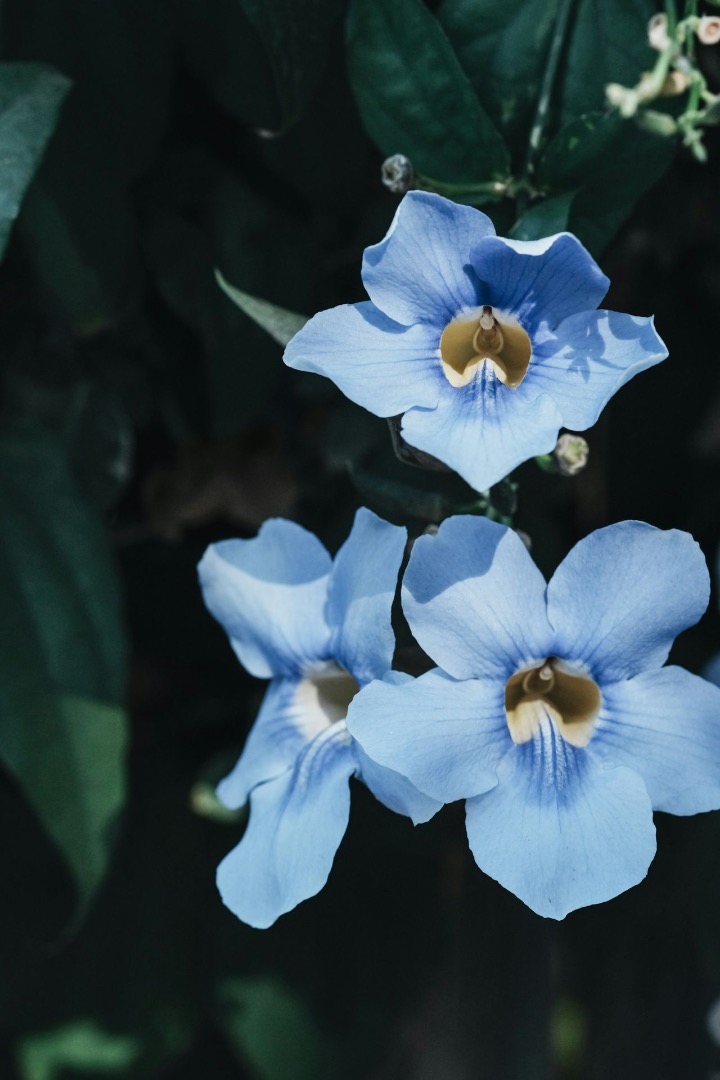
Habit
Climber
Height
5-8 m
Growth
Fast
Soil
Well-drained loamy
Shade
Full Sun to partial shade
Moisture
Moist
Edible
No
Medicinal
No
Origin
India, Asia
Climatic Condition
Tropical
Temperature (°)
20-35°C
Humidity (%)
60-80%
Potting media
Loam + Sand
Fertilizers
Balanced NPK (10:10:10)
Watering
Regular watering
Plant Weight
1-2 kg
Flowering Time
Summer to Fall
Soil Ph level
6.0-7.5
Water Ph level
6.5-7.0
Soil EC
1.0 dS/m
Yield Per Plant
High yield
NPK ratio
10:10:10
life Span
5-10 years
Health Benefits
Ornamental, attracts bees
Common Diseases and Remedies
scale of musanda , root rot
Stunting Of Growth, Yellowing of Leaves ,Wilting Of Plant,Damping Off
Removing Infected Parts of plant, Pruning.
HEALTH BENEFITS
Medicinal Properties
1. Anti-inflammatory: Blue Trumpet Vine contains compounds that have anti-inflammatory properties, which may help reduce swelling and pain.
2. Antimicrobial: The plant has been shown to exhibit antimicrobial activity, which can help prevent the growth of bacteria, fungi, and other microorganisms.
3. Antioxidant: Blue Trumpet Vine contains antioxidants that can help protect cells from damage caused by free radicals.
Traditional
1. Fever reduction: In traditional medicine, Blue Trumpet Vine has been used to treat fever, rheumatism, and other inflammatory conditions.
2. Respiratory issues: The plant has been used to treat respiratory problems such as bronchitis, asthma, and coughs.
3. Skin conditions: Blue Trumpet Vine has been used to treat skin conditions such as eczema, acne, and dermatitis.
What Is Blue Trumpet Vine ?
The Musanda plant, also known as Crinum asiaticum or poisonous tuber, is a tropical plant native to Asia and Africa. It is a perennial with large striped leaves and fragrant white or pink flowers. Although prized as an ornamental, it is also known to be poisonous if ingested, hence the nickname "poison tuber." It is important to handle with care and keep out of reach of children and pets.
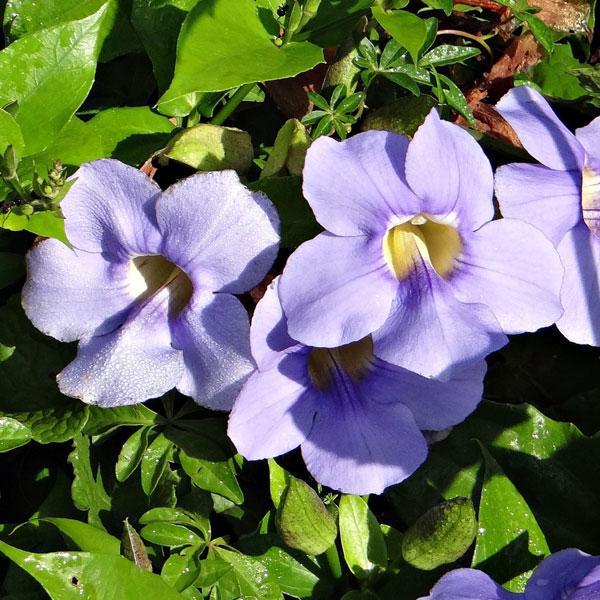
What Are The Different Types Of Blue Trumpet Vine?
1. Mussaenda erythrophylla
Also known as Red Flag Bush or Ashanti Blood, it is prized for its large, bright red bracts.
2. Mussaenda philippica
This species is known for its colorful and showy bracts that come in various shades of pink, red, and white
3. Mussaenda frondosa
Commonly known as the "maiden tree", it produces clusters of white or pink flowers surrounded by green foliage.
4. Mussaenda luteola
Native to Africa, this species has yellow flowers and is often cultivated as an ornamental plant.
5. Mussaenda pubescens
Also known as Velvet Mussaenda, it has velvety leaves and clusters of small white flowers.
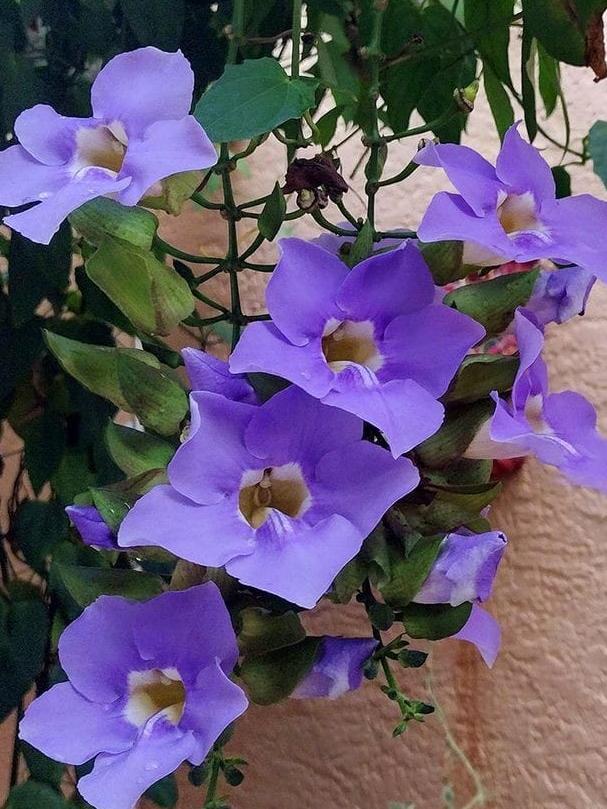
How To Care For Blue Trumpet Vine ?
1. Location
The Musanda plant or Musenda is native to tropical and subtropical regions around the world, primarily found in parts of Africa, Asia, and the Pacific Islands. It grows in warm climates with nutrient-rich, well-drained soil and prefers partial shade. Depending on the species, Musanda plants grow in gardens, forests, and roadsides in these regions.
2. Sunshine
Musanda plants generally prefer partial shade to full sun. Although it can tolerate some direct sunlight, especially in the morning and evening, it grows best in dappled sunlight or partial shade throughout the day. Too much direct sunlight can cause leaf burn and stress on the plant. Therefore, providing shade during the hottest parts of the day is beneficial for growth and health.
3. Soil
Musanda plants prefer fertile, well-drained soils that are rich in organic matter. A slightly acidic to neutral pH value (approximately 6.0 to 7.0) is ideal for optimal growth. Additionally, adding compost and organic matter to the soil improves soil texture and nutrients, promoting healthy root development and overall plant vigor. Avoid waterlogged or compacted soils as this can cause root rot and other problems for Musanda plants.
4. Hydration
Musanda plants prefer evenly moist soil, but not waterlogged soil. It is important to water regularly, especially during the active growing season and hot, dry weather. However, it cannot withstand standing water or excessive moisture. Therefore, to prevent root rot, it is important to make sure the soil has good drainage. Allow the top of the soil to dry slightly between waterings, then adjust watering frequency based on environmental conditions and the specific needs of your plants.
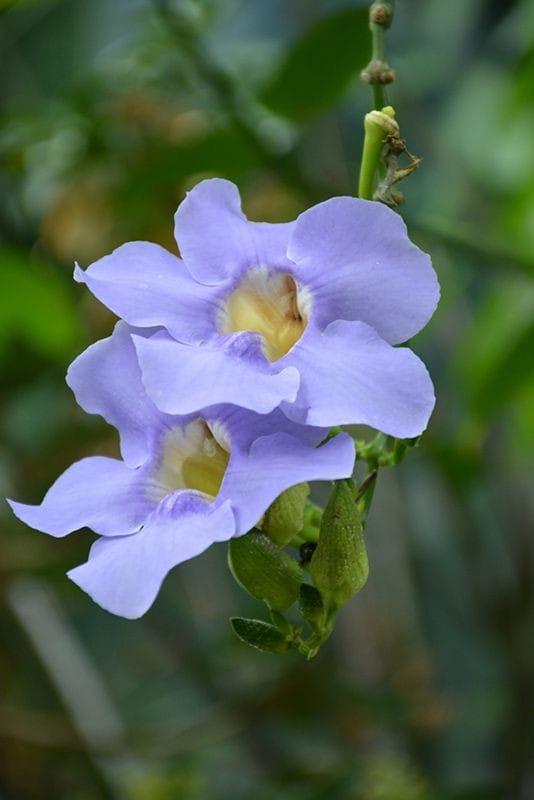
5. Nourishment
To nourish your Musanda plants, it is important to provide them with a balanced fertilizer during the growing season. You can use a slow-release fertilizer for flowering shrubs, or you can use an all-purpose fertilizer containing balanced nutrients (such as a 10-10-10 NPK ratio) according to the manufacturer's instructions. Additionally, organic matter such as compost or well-rotted manure added to the soil at planting time can be incorporated, or top dressing can provide important nutrients and improve soil structure.
6. Issues
The most common pests that can affect Musanda plants include aphids, mealybugs, and spider mites. These pests feed on the sap of the plant and can cause damage to the leaves and stems. Musanda plants can be susceptible to fungal diseases such as powdery mildew, leaf spot, and root rot, especially if the soil is too wet or the plant is grown in humid conditions. Improper pruning or failure to prune Musanda plants can result in overgrowth, elongation, or reduced flowering. You can prevent these problems by regularly pruning to remove dead or diseased branches and shaping your plant.
What Are The Benefits Of Blue Trumpet Vine ?
Ornamental Beauty Musanda plants are prized for their bright and colorful bracts, making them popular for landscaping and ornamental gardens. Attracts pollinators Musanda flowers attract bees, butterflies, and other pollinators, helping to promote biodiversity in your garden. Low Maintenance Once established, Musanda plants are relatively easy to care for and require moderate watering and occasional pruning to maintain shape and health. Medicinal uses Some parts of the Musanda plant have medicinal properties and are used in traditional Chinese medicine for a variety of purposes, including the treatment of wounds, fever, and gastrointestinal disorders. However, it is important to consult a doctor before using any plant medicinally. Erosion Control: Musanda plants' dense foliage helps prevent soil erosion and helps stabilize landscape slopes and banks.

FAQs About Growing Blue Trumpet Vine
1. What are the ideal growing conditions for Blue Trumpet Vine ?
Musanda plants prefer partial shade to full sunlight. They thrive in locations with dappled sunlight or partial shade throughout the day.Musanda plants prefer warm temperatures and cannot tolerate frost. They thrive in tropical or subtropical climates with mild winters and warm summers.
2. Can Blue Trumpet Vine plants be grown indoors?
Provide your musanda plant with bright, indirect sunlight. Place it near a window where it can receive plenty of natural light, but avoid placing it in direct sunlight, especially during the hottest part of the day.Musanda plants prefer warm temperatures and cannot tolerate frost. Keep your indoor environment at a temperature range of around 65-75°F (18-24°C) during the day and slightly cooler at night.
3. How often should I water my Blue Trumpet Vine plant?
The frequency of watering your musanda plant depends on various factors such as the size of the plant, the type of soil it's planted in, the ambient humidity, and the temperature.
4. Are Blue Trumpet Vine plants toxic to pets?
Mussaenda plants, commonly known as musanda plants, are not listed as toxic to pets such as cats and dogs by the American Society for the Prevention of Cruelty to Animals (ASPCA). However, while musanda plants are generally considered safe for pets, ingestion of any plant material may still cause gastrointestinal upset in some animals. It's always a good idea to monitor your pets around plants and contact your veterinarian immediately if you suspect they have ingested any part of a musanda plant or any other plant.
5. What is the blooming season for Blue Trumpet Vine plants?
The blooming season for musanda plants can vary depending on the species and environmental conditions, but generally, they bloom from late spring through fall. In tropical and subtropical regions where musanda plants thrive, they may bloom almost year-round. However, in cooler climates, the blooming season may be limited to the warmer months when temperatures are more favorable for flowering.
